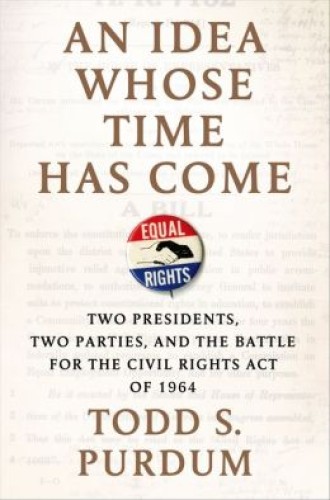An Idea Whose Time Has Come, by Todd S. Purdum
If you saw the 2012 movie Lincoln—the one directed by Steven Spielberg and starring Daniel Day-Lewis as the martyred president—you have seen something like the 19th-century version of An Idea Whose Time Has Come. Both are emotionally gripping stories of how epic and vitally important changes somehow made their way through the sausage-making machinery of Congress—the 13th Amendment in the case of Lincoln and the Civil Rights Act of 1964 in the case of this book. Both, moreover, are consummate “inside baseball” stories. They leave you with memorable anecdotes and character sketches of backroom deals, politicians major and minor, and unlikely heroes who rose above themselves to help carry the day. They are both ultimately stories in which Washington does the right thing. The implications are clear for the present day, when Washington can seemingly do nothing at all—not even enact a minimal and inadequate gun control law, even after the slaughter of Newtown—never mind do the right thing.
Both, as well, exhibit some of the flaws of the inside baseball approach. The narrative takes over from an ultimately much more historically significant argument about the grassroots social movements that brought these measures to the halls of the lawmakers in the first place. This is more true of the movie than the book—the movie has just two and a half hours to tell its story, and the book enjoys the luxury of at least sketching the story of the civil rights movement that made the Civil Rights Act possible—but it is characteristic of the genre that the powerful people act, and just about everyone else is acted upon.
That being said, the inside baseball approach is also irresistible, precisely because it can be encapsulated in a snappy narrative. Compare this book to Taylor Branch’s trilogy on the civil rights movement, for example, or Robert Caro’s ongoing magnum opus on Lyndon Baines Johnson, and it’s easy to see the attraction. You can sail through this book in just a few sittings and learn a lot in the process. It’s also tailor-made for a PBS American Experience two-hour special.





